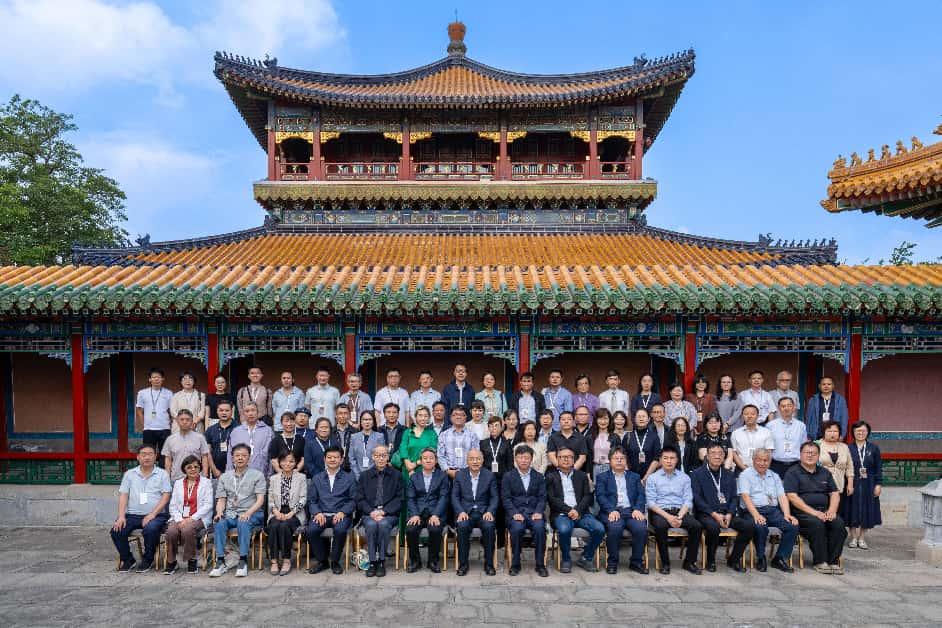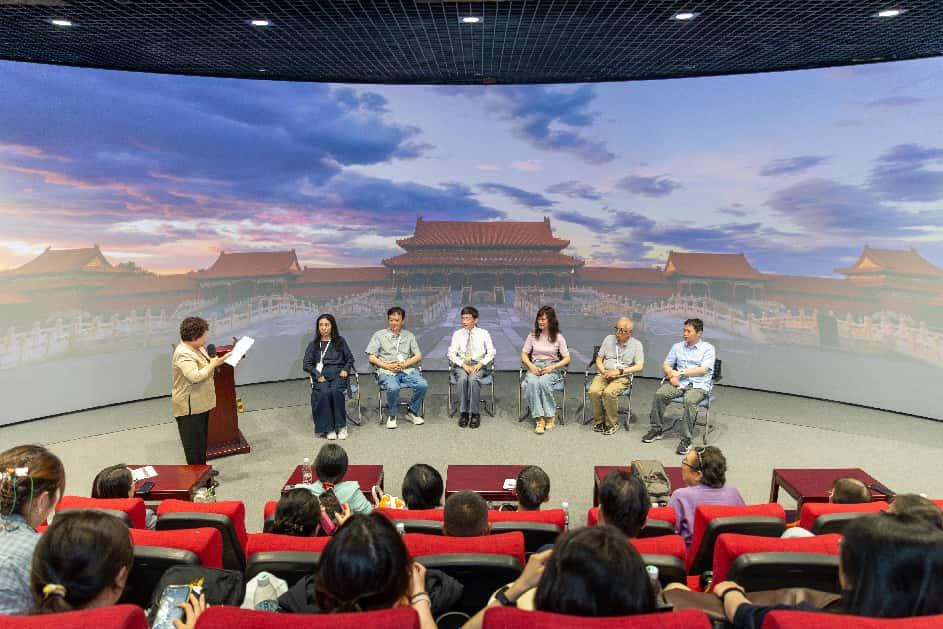On May 26, 2025, the exhibition “A Thousand-Year Legacy of Caihua: Inheritance and Innovation in Official-Style Chinese Architectural Polychrome Painting” opened to the public at the Palace of Eternal Longevity (Yongshou gong) in the Palace Museum. The opening ceremony took place on the same day, attended by Wang Xudong, director of the Palace Museum; Du Haijiang, Party secretary and deputy director of the Palace Museum; Lou Wei, executive deputy director of the Palace Museum; Yang Zhouxian, deputy director of the management center of China National Arts Fund (CNAF); Deng Chao, director general of the Department of Cultural Relics and Historic Sites at the National Cultural Heritage Administration (NCHA); Li Bingzhong, vice president of Shaanxi Normal University; Li Li, deputy director of the China Academy of Cultural Heritage; along with teachers and student representatives from the training program funded by CNAF— “Talent Training on the Official-Style Chinese Architectural Polychrome Painting Design.” Zhao Peng, deputy director of the Department of Architectural Conservation Management at the Palace Museum, presided over the ceremony.
In his speech, Lou Wei emphasized that official-style Chinese Caihua (architectural polychrome painting) represents a traditional art form with profound cultural significance. The official-style Chinese Caihua from the Ming and Qing dynasties, housed at the Palace Museum, are masterpieces that showcase the wisdom and creativity of ancient Chinese artisans. He stated that these works deserve careful preservation, thorough research, and active promotion. Lou expressed gratitude to CNAF and Shaanxi Normal University for their support, and praised the generations of Palace Museum staff for their lasting dedication to the research and preservation of official-style Chinese Caihua.
Deng Chao stressed that NCHA will continue to support initiatives in this area. He noted that Caihua will be designated as a specific topic in the 15th Five-Year Plan for architectural heritage protection and research, which will encourage more systematic studies and public involvement.
The exhibition, held at the Palace of Eternal Longevity, is divided into two major sections: “Tradition” and “Innovation.”
The “Tradition” section comprises seven units, featuring 43 carefully selected copies and painting samples that showcase the finest examples of official-style Chinese Caihua items from the Sui through the Qing dynasties. Many of these pieces had never before displayed publicly.
The “Innovation” section features four units and presents 38 creative artworks (sets) by 23 students from the art training program supported by CNAF.
According to Yang Hong, deputy director of the Department of Architectural Conservation Management at the Palace Museum and the chief curator of the exhibition, the event offers an insightful overview of the development of ancient Chinese Caihua. It also serves as a showcase for the outcomes of the aforesaid art training program. Yang expressed her hope that the training program, along with the exhibition, published books, and video materials, would mark a new beginning for the preservation and innovation of this traditional art form, strengthening its role in promoting cultural prosperity and advancing the rejuvenation of the Chinese nation.
The exhibition runs until August 26, 2025.

On the afternoon of the opening day, a seminar on official-style Chinese Caihua was held at the auditorium of the Institute for Digital Application of Cultural Assets in the Palace Museum. Experts and scholars engaged in in-depth discussions on the historical development and artistic value of official-style Chinese Caihua. Through keynote presentations and exchanges, the seminar highlighted innovative applications of traditional painting techniques in the context of modern technology and design, providing academic support for the preservation and development of this art form.
During the seminar, several experts presented their findings. Yang Hong, deputy director of the Department of Architectural Conservation Management of the Palace Museum; Sun Yihua, associate researcher at the Dunhuang Academy; Chen Tong, senior engineer at the Department of Architectural Conservation Management of the Palace Museum; Ding Yao, professor at the School of Architecture of Tianjin University; Li Luke, associate professor and doctoral supervisor at the School of Architecture of Tsinghua University; and Ji Lifang, senior engineer at the Department of Architectural Conservation Management of the Palace Museum, all shared insights on various topics. These included the curation of the exhibition, Northern Song-era Caihua on the eaves of Dunhuang grottoes, the spirit of Caihua in the Tang and Song dynasties, Liao-era Caihua at the Fengguo Temple in Yixian County, key features of Caihua at the Yongle Palace, and Caihua samples from the Ming and Qing dynasties. Additionally, Sheng Qing, a student representative, also introduced his artwork “The Splendor of a Thousand Years” at the seminar.




